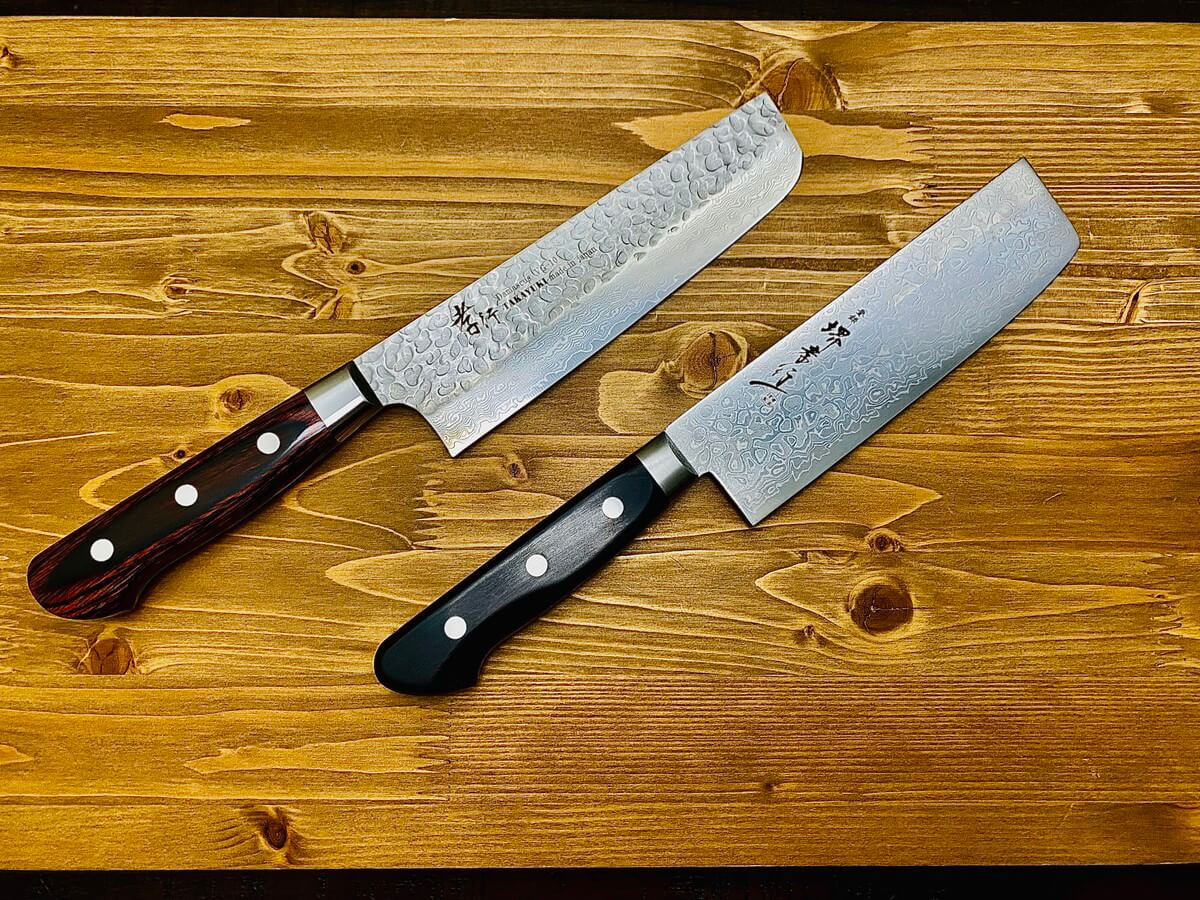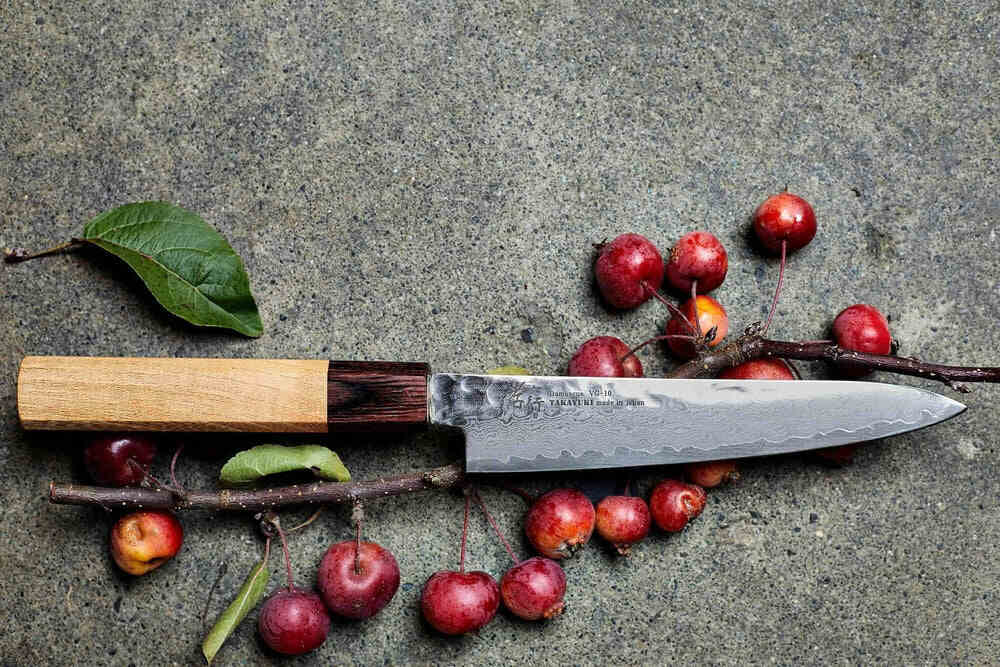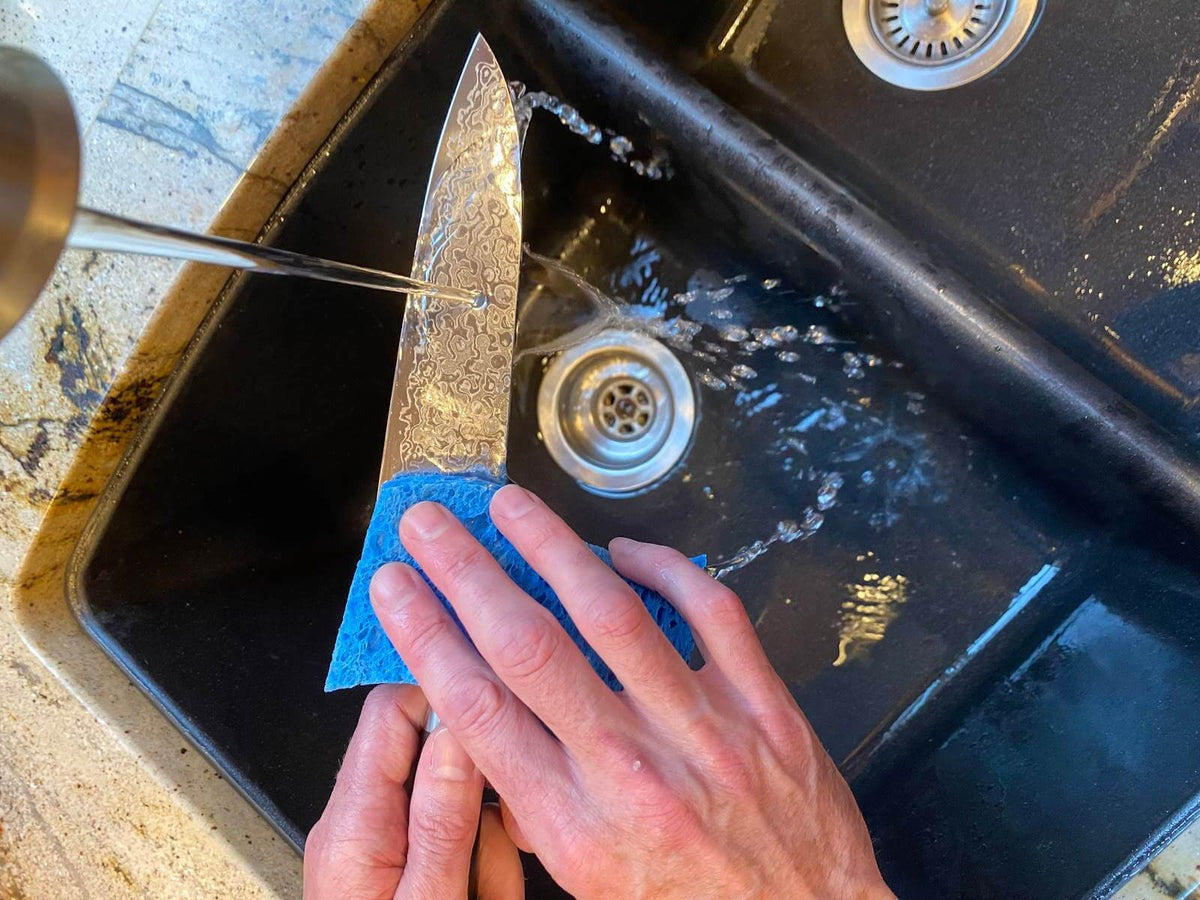
Japanese Knife Comparison: Sakai Takayuki Damascus 33 Layer Nakiri Knife vs 45 Layer Mirror Nakiri Knife
Introducing the inaugural installment of our brand-new article series, meticulously crafted to assist individuals in understanding the nuances of various types of knives. Our primary objective is to empower readers by aiding them in making informed decisions about selecting the most suitable culinary tool to enhance their kitchen. Through this comprehensive series, we endeavor to illuminate the differences among these knives, providing insights that will help guide individuals toward their ideal kitchen companion. Embark on this enlightening journey with us as we unravel the subtleties and intricacies that differentiate these indispensable tools, ultimately empowering you to make the perfect choice for your culinary needs.
Inspired by the spirit of Japanese knife making, we delve into the intricacies of each blade's construction and uses, honed through centuries of expertise passed down through generations. Just as Japan’s revered artisans have honed their skills over time, we aspire to impart that same sense of dedication and artistry to our readers, guiding them toward a better understanding of the unique qualities that define these extraordinary tools.
In this initial installment, we will be focusing on two remarkable Nakiri knives. To provide some context, Nakiri knives are specifically crafted for the purpose of handling vegetables. With their unique rectangular design, these knives offer ample clearance for your hand while effortlessly slicing through a variety of produce, ranging from carrots to cabbage. If your aim is to achieve precision slicing and dicing when working with vegetables, the Nakiri knife is an excellent choice that meets all your needs.
Damascus 33-Layer VG-10 Nakiri Chef Knife with Mahogany Handle
This series has earned its immense popularity for a multitude of reasons. Firstly, the blade boasts a remarkable hammered finish adorned with an exquisite Damascus patterning, while the deep red Mahogany handle adds a touch of elegance, making this knife truly captivating and a standout addition to any kitchen.
Balance and Handling:
- Aligns more closely with European knives in terms of balance.
- Full tang construction and slightly thicker blade contribute to a centered balance.
- Suited for a wide range of vegetable-related tasks with exceptional versatility.
- Weight is expertly balanced, ideal for those familiar with full-tang western-style knives.
Blade Material:
- VG-10 stainless steel core, is known as one of the best culinary stainless steels.
- Excellent corrosion resistance and edge retention.
- Frequently used in Japanese kitchen knives.
- Hammered pattern facilitates easy food release while cutting.
- Beautiful Mahogany handle enhances visual appeal and balance.
In contrast, the Damascus 33-Layer Nakiri chef knife is slightly heavier than the Mirror Nakiri knife, which may be a crucial factor in your decision-making process, depending on your cooking style. The extra weight makes it more durable than the Mirror series.
Damascus 45-Layer AUS-10 Mirror Nakiri Chef Knife
The Sakai Takayuki Mirror Damascus 45-Layer series truly distinguishes itself with its thin blade and striking mirror polish, culminating in a Nakiri knife that exudes sleekness and elegance. Its design is a feast for the eyes.
Balance and Handling:
- Full-tang handle for enhanced durability and balance.
- Lightweight construction for improved maneuverability.
- Ensures nimbleness and a well-balanced feel during use.
Blade Material:
- AUS-10 stainless steel core, known for commendable edge retention and corrosion resistance.
- Slightly less chromium content compared to VG-10, resulting in slightly less corrosion resistance.
- Delicate nature due to the thinness of the blade, requiring careful handling to prevent bending or chipping.
Although the AUS-10 contains slightly less chromium than the VG-10, which makes it slightly less corrosion-resistant, it offers a slight increase in edge retention over the VG-10. Overall, the differences between these metals are negligible, and most users will not notice a significant difference.
Conclusion
When it comes to choosing a reliable workhorse for the produce in your kitchen, the Damascus 33-Layer VG-10 Nakiri Chef Knife with a Mahogany handle emerges as an exceptional option.
- Effortlessly handles a wide range of vegetables
- Crafted with precision using the time-honored technique of Damascus layering
- Features 33 layers with a VG-10 stainless steel core for exceptional durability and remarkable sharpness
- Rich mahogany handle adds warmth and elegance
- Provides a comfortable grip for ease of use and maneuverability
- Allows for precise handling and control, even during intricate tasks
This knife is an indispensable tool in any culinary repertoire, offering exceptional durability, sharpness, and a comfortable grip. The combination of the Damascus layering technique and the VG-10 stainless steel core ensures a visually appealing and highly functional knife that can handle various vegetable preparations with ease.
Alternatively, for those seeking a more delicate and refined option, the Damascus 45-Layer AUS-10 Mirror Nakiri Chef Knife stands as a captivating choice.
- Slender profile enables effortless gliding through vegetables with unparalleled precision
- Achieve exquisite, paper-thin slices with ease
- 45 layers of Damascus with mirror polish for exceptional visual appeal and craftsmanship
- The mirror polish enhances the knife's aesthetics and showcases its high-quality construction
- Becomes a statement piece in your kitchen, embodying the perfect harmony between form and function
- Combines elegance and functionality for a remarkable culinary experience
This celebrated knife stands out for its slender profile, allowing it to effortlessly glide through vegetables with precision and create exquisite, paper-thin slices. The mirror polish applied to its 45 layers of Damascus not only enhances its visual appeal but also represents its exceptional craftsmanship. With its elegant design and outstanding functionality, this knife becomes a statement piece in any kitchen, embodying the perfect balance between form and function.
Regardless of which Nakiri knife you choose, rest assured that both options excel in their ability to conquer any vegetable with utmost ease and precision. Their thoughtful designs and meticulous craftsmanship are a testament to the legacy of Japanese knife-making. For those seeking a touch of traditional Japanese aesthetics, the Damascus 33-Layer VG-10 Nakiri Knife with a Zelkova and Mahogany presents a compelling choice with its elegant Wa handle, perfectly blending tradition and functionality.
After reading through all of this have you decided you need something more versatile? Check out the Gyuto or Santoku knives. Both of these are multipurpose knives that can tackle produce or proteins with ease.



